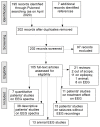Reviewing Evidence for the Relationship of EEG Abnormalities and RTT Phenotype Paralleled by Insights from Animal Studies
- PMID: 34069993
- PMCID: PMC8157853
- DOI: 10.3390/ijms22105308
Reviewing Evidence for the Relationship of EEG Abnormalities and RTT Phenotype Paralleled by Insights from Animal Studies
Abstract
Rett syndrome (RTT) is a rare neurodevelopmental disorder that is usually caused by mutations of the MECP2 gene. Patients with RTT suffer from severe deficits in motor, perceptual and cognitive domains. Electroencephalogram (EEG) has provided useful information to clinicians and scientists, from the very first descriptions of RTT, and yet no reliable neurophysiological biomarkers related to the pathophysiology of the disorder or symptom severity have been identified to date. To identify consistently observed and potentially informative EEG characteristics of RTT pathophysiology, and ascertain areas most worthy of further systematic investigation, here we review the literature for EEG abnormalities reported in patients with RTT and in its disease models. While pointing to some promising potential EEG biomarkers of RTT, our review identify areas of need to realize the potential of EEG including (1) quantitative investigation of promising clinical-EEG observations in RTT, e.g., shift of mu rhythm frequency and EEG during sleep; (2) closer alignment of approaches between patients with RTT and its animal models to strengthen the translational significance of the work (e.g., EEG measurements and behavioral states); (3) establishment of large-scale consortium research, to provide adequate Ns to investigate age and genotype effects.
Keywords: MECP2; Rett syndrome; resting state EEG; spontaneous EEG; translational biomarker.
Conflict of interest statement
The authors declare no conflict of interest.
Figures
Similar articles
-
Sensory evoked potentials in patients with Rett syndrome through the lens of animal studies: Systematic review.Clin Neurophysiol. 2020 Jan;131(1):213-224. doi: 10.1016/j.clinph.2019.11.003. Epub 2019 Nov 21. Clin Neurophysiol. 2020. PMID: 31812082
-
MeCP2+/- mouse model of RTT reproduces auditory phenotypes associated with Rett syndrome and replicate select EEG endophenotypes of autism spectrum disorder.Neurobiol Dis. 2012 Apr;46(1):88-92. doi: 10.1016/j.nbd.2011.12.048. Epub 2012 Jan 9. Neurobiol Dis. 2012. PMID: 22249109 Free PMC article.
-
Clinical and genetic Rett syndrome variants are defined by stable electrophysiological profiles.BMC Pediatr. 2018 Oct 19;18(1):333. doi: 10.1186/s12887-018-1304-7. BMC Pediatr. 2018. PMID: 30340473 Free PMC article.
-
EEG features and epilepsy in MECP2-mutated patients with the Zappella variant of Rett syndrome.Clin Neurophysiol. 2010 May;121(5):652-7. doi: 10.1016/j.clinph.2010.01.003. Epub 2010 Feb 12. Clin Neurophysiol. 2010. PMID: 20153689
-
Exploring the possible link between MeCP2 and oxidative stress in Rett syndrome.Free Radic Biol Med. 2015 Nov;88(Pt A):81-90. doi: 10.1016/j.freeradbiomed.2015.04.019. Epub 2015 May 8. Free Radic Biol Med. 2015. PMID: 25960047 Review.
Cited by
-
Effect of presentation rate on auditory processing in Rett syndrome: event-related potential study.Mol Autism. 2023 Oct 26;14(1):40. doi: 10.1186/s13229-023-00566-1. Mol Autism. 2023. PMID: 37885019 Free PMC article.
-
Social Behavioral Deficits in Krushinsky-Molodkina Rats, an Animal Model of Audiogenic Epilepsy.J Pers Med. 2022 Dec 14;12(12):2062. doi: 10.3390/jpm12122062. J Pers Med. 2022. PMID: 36556281 Free PMC article.
-
Sleep Disorders in Rett Syndrome and Rett-Related Disorders: A Narrative Review.Front Neurol. 2022 Mar 1;13:817195. doi: 10.3389/fneur.2022.817195. eCollection 2022. Front Neurol. 2022. PMID: 35299616 Free PMC article. Review.
-
Epigenetic genes and epilepsy - emerging mechanisms and clinical applications.Nat Rev Neurol. 2022 Sep;18(9):530-543. doi: 10.1038/s41582-022-00693-y. Epub 2022 Jul 20. Nat Rev Neurol. 2022. PMID: 35859062 Review.
-
Comprehensive High-Depth Proteomic Analysis of Plasma Extracellular Vesicles Containing Preparations in Rett Syndrome.Biomedicines. 2024 Sep 24;12(10):2172. doi: 10.3390/biomedicines12102172. Biomedicines. 2024. PMID: 39457485 Free PMC article.
References
-
- Kozinetz C.A., Skender M.L., MacNaughton N., Almes M.J., Schultz R.J., Percy A.K., Glaze D.G. Epidemiology of Rett Syndrome: A Population-Based Registry. Pediatrics. 1993;91:445–450. - PubMed
-
- Hagberg B., Hanefeld F., Percy A., Skjeldal O. An Update on Clinically Applicable Diagnostic Criteria in Rett Syndrome. Comments to Rett Syndrome Clinical Criteria Consensus Panel Satellite to European Paediatric Neurology Society Meeting, Baden Baden, Germany, 11 September 2001. Eur. J. Paediatr. Neurol. EJPN Off. J. Eur. Paediatr. Neurol. Soc. 2002;6:293–297. doi: 10.1053/ejpn.2002.0612. - DOI - PubMed
Publication types
MeSH terms
Substances
Grants and funding
LinkOut - more resources
Full Text Sources
Medical
Research Materials
Miscellaneous





